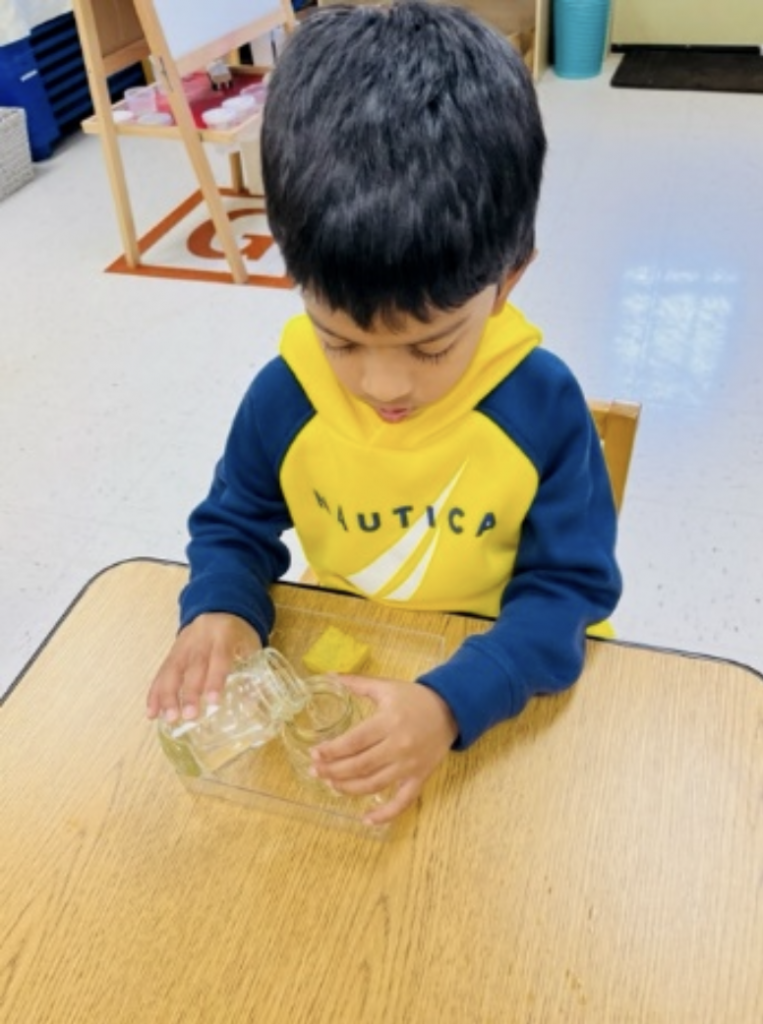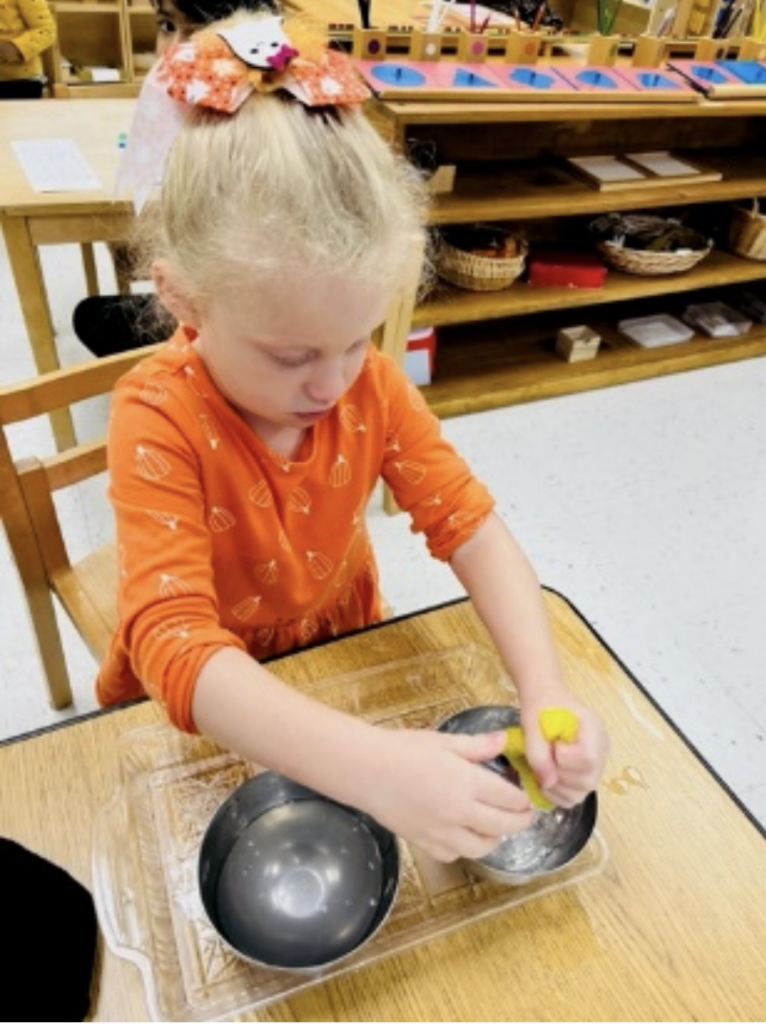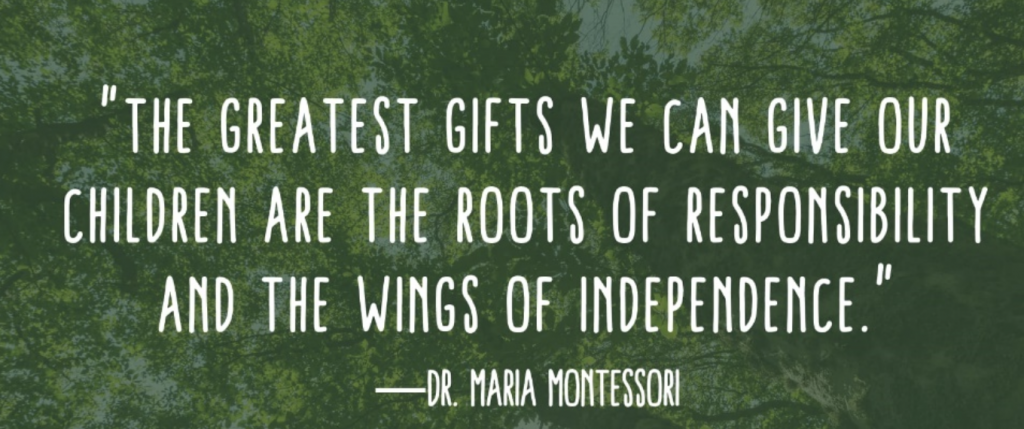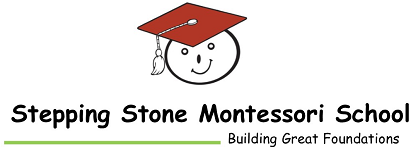In the previous Blog article, we talked about how Grace and Courtesy is an important and essential part of our lives.
At the beginning of the school year, we focus on Grace and Courtesy because these activities help the children self-regulate, use the prepared environment in a respectful manner, and function. Grace and Courtesy activities are important for establishing respect for self and others, an important aspect of the path to normalization.This also helps the older children be prepared for peer teaching. They are the guides and the role models for the younger children in the class. The kindergarteners know the environment so well that they teach the new children some basic skills, such as how to roll the rugs, where are the essential materials in the classroom, what are the teacher’s expectations, etc. This helps teachers tremendously in normalizing the classroom environment.
In her book, The Absorbent Mind, Dr. Montessori mentioned that children of varying ages work well together: “Our schools show that children of different ages help one another. The younger one sees what the older ones are doing and asks for explanations. There is a communication and harmony between the two that one seldom finds between the adult and the small child.“
Focused normalization occurs easily through a child at work. The Love of learning is very important. When a child loves their work, they become engaged, which leads to being self-disciplined. This process begins to help with becoming normalized.

Normalization Begins with Practical Life: Lessons that develop self -discipline
The prepared classroom environment fosters order, coordination, control of movement, concentration, and independence. The normalized environment helps children to develop self-direction, self-confidence, and a desire for love of learning. The teacher’s role is to nurture and help develop a child’s social, emotional, physical, and academic skills.
Normalization occurs when the children choose their work independently, concentrate, and work in a beautiful, respectful, and peaceful Montessori environment.
Practical Life is the foundation for all other areas of the classroom. It helps the children move forward and prepare for the progress. The left-to-right pouring activities not only help the child increase concentration, coordination, and independence, but they indirectly help the child prepare for reading from left to right. Practical Life activities teach care of self and care of the environment and help children function in the prepared environment.

The Practical Life area also teaches how to care for self and care for the environment, which assists the children to explore the other areas of the classroom. The teachers spend a good amount of time reinforcing Practical Life activities, including Grace and Courtesy and Peace education. The concentration level of the children will increase, and normalization will take place. The classroom will have a peaceful, orderly, and structured (enriched) environment for the length of the school year.

Positive Discipline helps with Normalization:
Incorporating positive discipline methods into our lives could seem difficult, but with the right tools, anyone can do it. Some examples of positive discipline strategies include:
- 1.Redirection: It takes effort to redirect young children, but it is not too hard if we keep practicing, and it works!
- 2.Positive Reinforcement: Acknowledgement of good behavior and ignoring the negative one.
- 3.The classroom expectations are clear and defined well to children.
- 4.Being consistent in following those classroom rules.
- 5.Giving them the opportunity to think about any conflict and self-correct.
- 6.Providing them with 2 choices and letting them choose one and be responsible.
- 7.Simple, timely reminders and one-step direction at a time.
- 8.Following the order/routine of the day
- 9.Be calm, centered, and peaceful.
Positive discipline has many benefits, including:
- It’s effective.
- It promotes self-esteem and confidence.
- It helps children feel motivated and encouraged.
- It helps with social/emotional development.
- It models kindness and gratitude.
- It helps with bonding and knowing the child’s personality.

The Positive Discipline motto is: No Rewards, No punishment.
The adults in the classroom are good role models. Over a short period of time, thechildren will be more courteous; they will learn good behavior and start to practice the same. The teachers do NOT label a child if he/she is not in good behavior. They would rather work with them and continue to be role models. They give tools to that child on how to self-regulate and how to self-correct.
Observation of the overall classroom – Observing the children using walking feet in the class, being engaged productively, carefully carrying a tray, rolling the rug, helping a friend, sitting on a chair, enjoying the day, etc., are precious moments for any teacher. It is also important to observe the opposite and work towards it to help with the process of Normalization.
Maria Montessori herself said that the teachers prepare the environment such that the inner needs of the children are met. Once the classroom is ready to use the necessary tools, the teacher should take a step back and let the classroom function. That’s a sign of the classroom being normalized. The children are working independently, making their choices, developing social skills, and so much more!

